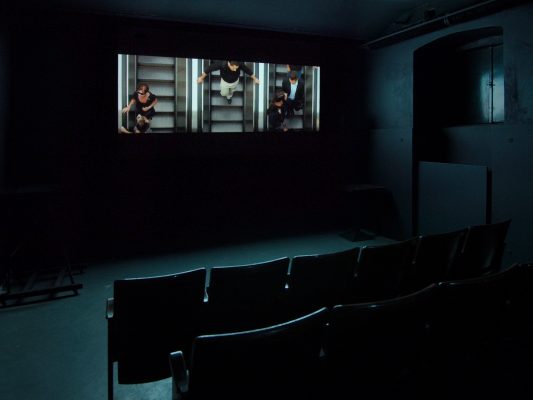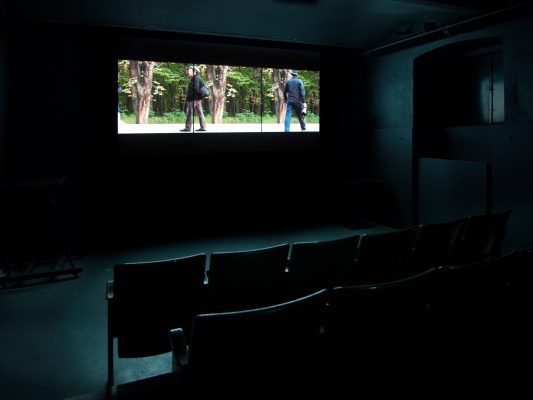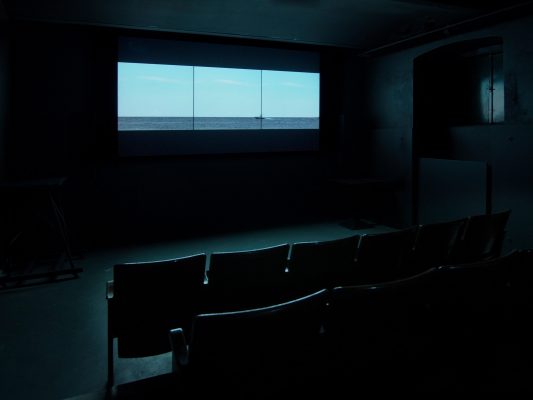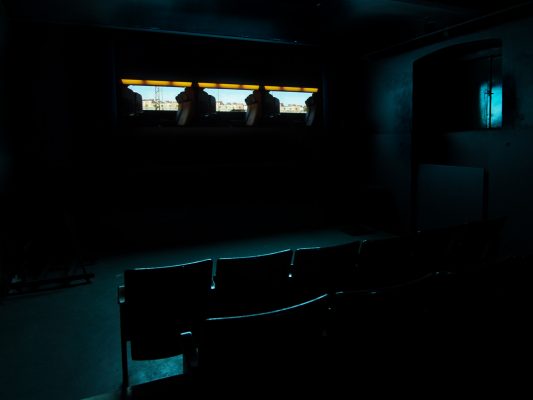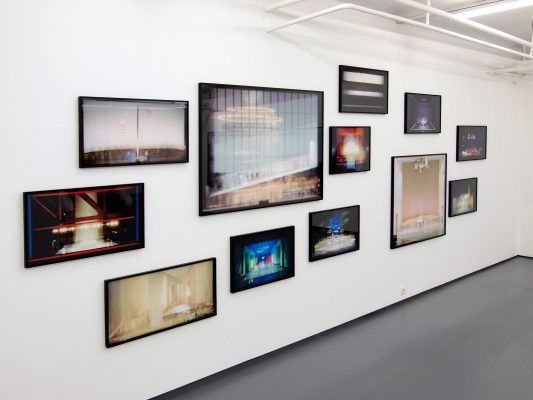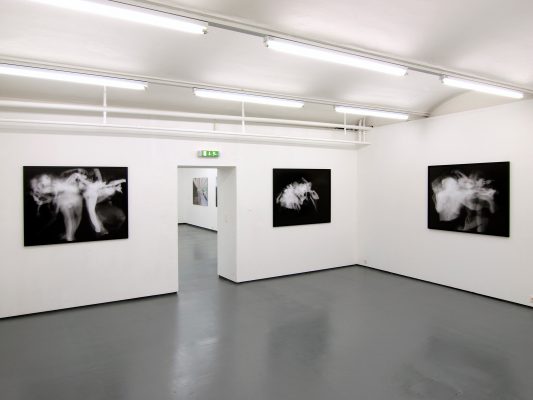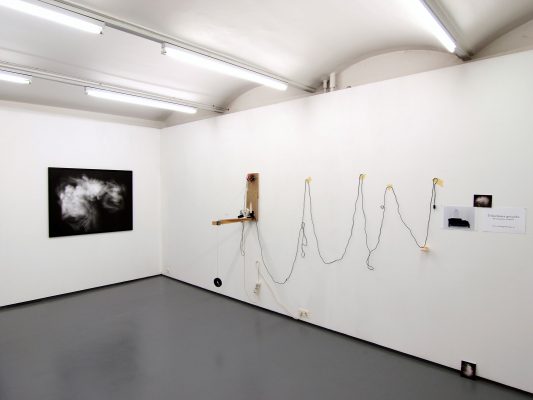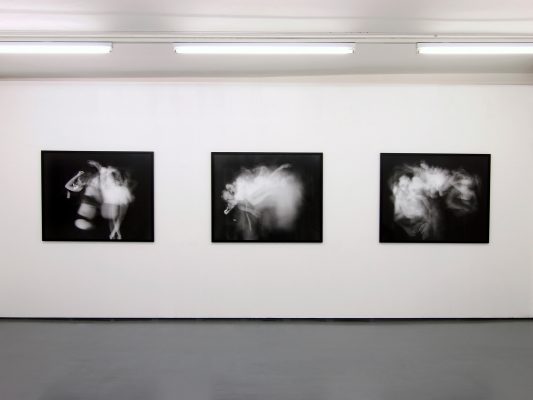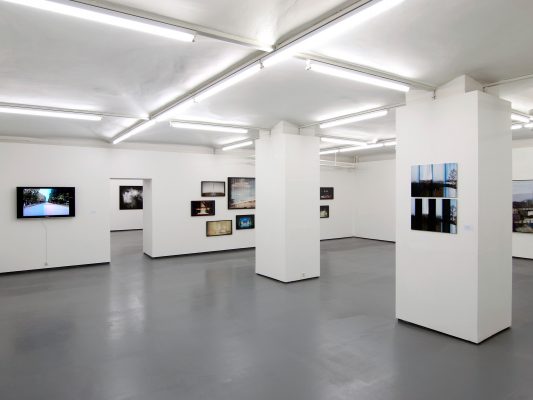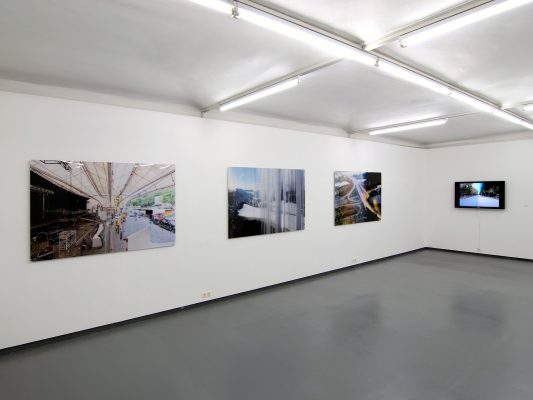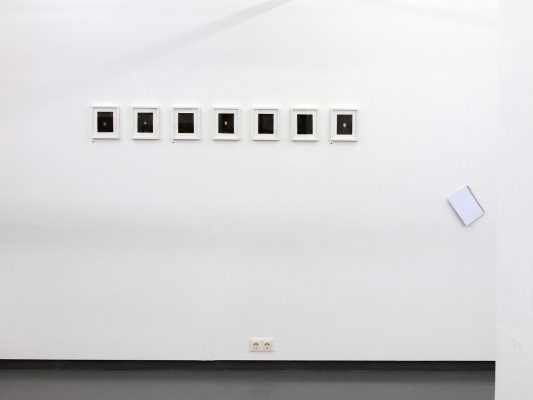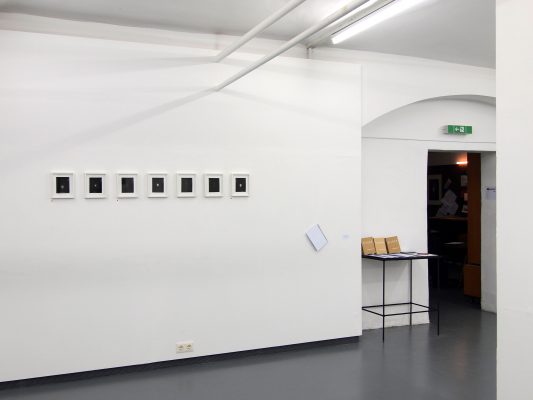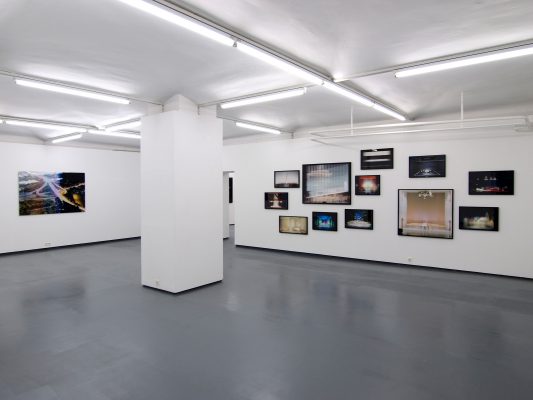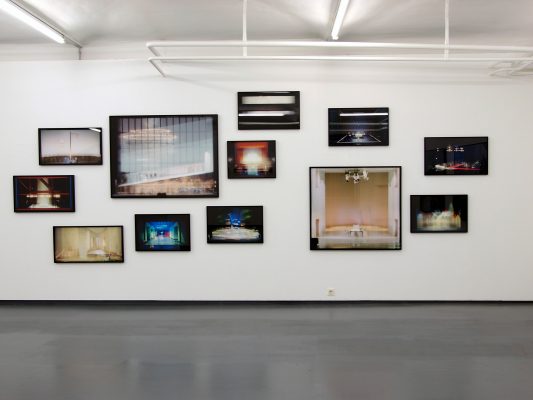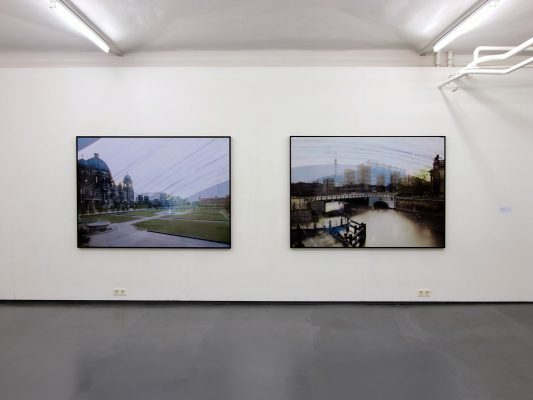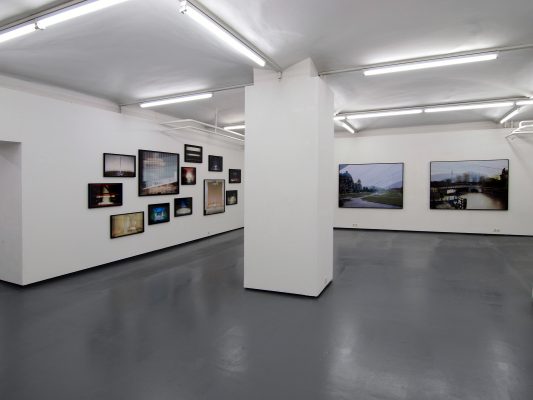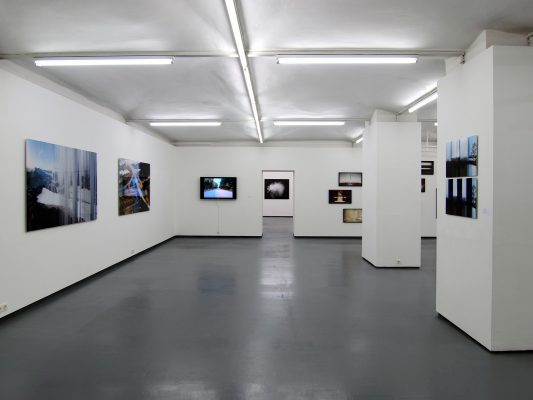Opening: Monday, 11 April 7:00 p.m.
Introduction: Petra Noll
The photographic works presented at the exhibition Frozen Time deal with the depiction of time as a process, consolidated (“frozen”) into one single image. Employing extremely long exposure times, using pinhole cameras or digital montage, the artists shift photography to become more film-like in an endeavor to visualize aspects that constitute time: change, evolution and movement. Countless individual moments of real-life situations including architecture, cityscapes and landscapes, theater, or of people watching overlap or are joined together seamlessly. As a result, pictures are created which only a camera could produce, pictures that are otherwise not seen by the human eye. Alongside photographic works, videos will also be shown: Here too, a new texture of time and space emerges by multiplying and stringing together one and the same film sequence.
Robert Bodnar(Time Scans) points his camera for hours or days at a specific motif, in this case mostly landscapes, and takes several hundreds or even thousands of images at regular intervals. From each image, he digitally isolates vertical strips, each the width of a single pixel, joining them together in consecutive order yielding an entire image. With this process, the course of an entire day is unified in one single image, whereas each segment represents a different moment of the day.
Michael Michlmayr’s videos, or better said, the “moving pictures” from the series KONTINUUM – as in his other photographic works – explore time and space, as well as the condensation of time and space. Quotidian scenes in urban space are filmed from one single position and are then assembled to “film-tableaux”. The same film sequence is multiplied and strung together. As a result of the synchronized and unsynchronized film sequences, a new stage of space-time is created.
Sophie Pölzlinvited people to pose in a studio in front of a pinhole camera equipped with direct postitive paper in her series 20 Minuten. Standing in full light, subjects in the portraits were not to move for 20 whole minutes. They were left to themselves. Some perceived this situation to be psychologically intense, while others enjoyed the pleasantness of the total standstill. Each image carries with it as it were the thought process and feelings of a person during these very intense twenty minutes.
In his series of black and white photographs Der Liebenden Schlaf, Paul Schneggenburger captures a single photograph of a couple sleeping in the same bed over the period of one night using the long bulb exposure time of six hours. The sleeping couples (who spent the night in the candlelit room of the artist’s apartment, without the presence of the artist), their movements, their turning to or away from each other, are superimposed producing an emotionally touching, almost dance-like poetic photograph. The shared sleep is visualized as a state characterized by the loss of control, but also as one of total trust and surrender to the other.
Karen Stuke(Opera Obscura) “wants to make the “other”, the absolute theater photograph. An image that unites everything, the entire scene, the entire act, the entire program. This is how the artist came, almost inevitably, to use an anachronistic slow instrument, the camera obscura allowing such an image to be possible (…). She reacts to the orchestration of the scene by staging the camera that then in turn sets the stage for the image in stage-like boxes. A distinct system for producing images is the result.“ (Gottfried Jäger)
Michael Weselyconstructs analog cameras in part to allow extremely long exposure times. This makes it possible for the artist to capture urban and architectural developments in a single photograph (for example, Palast der Republik, Berlin, 2006-2008, which will be shown in the FOTOGALERIE WIEN), but also to record biological changes. Wesely’s artistic work revolves around the exploration of the essence of photography, the visualization and structuring of light and time. The photograph, generally understood as an image that captures a single moment in time, is defined anew as being a series of several overlapping processual situations.
F O T O G A L E R I E W I E N
Petra Noll, on behalf of the collective
